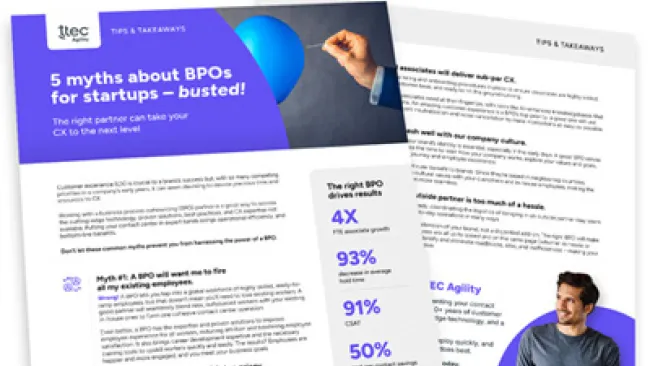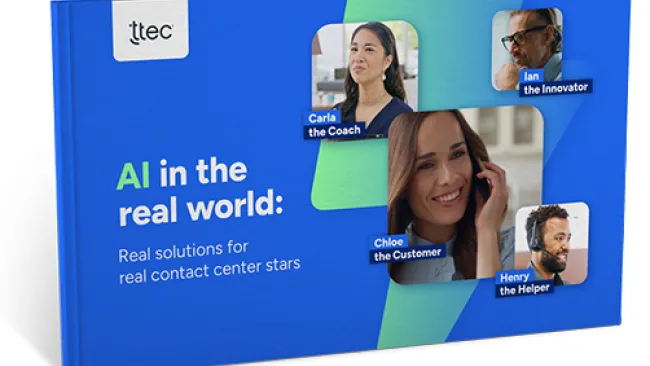In today’s incredibly fast-paced and highly digitized world, delivering a great customer experience begins with understanding the twisting paths that consumers take across touchpoints to make a purchase or to resolve a product or service issue. Delivering a great customer experience is tougher than ever as customers take a complicated, non-linear path to purchase and for support.
Because customers often take an indirect path to buy products or to receive help, it’s absolutely crucial for marketing, sales, and customer care leaders to gain a comprehensive understanding of the customer journey. Identifying the steps customers take and the pain points they may encounter enables the development of frictionless experiences.
Understanding and guiding the customer journey makes good business sense. Customers prefer to do business with companies that make it easy for them to be a customer. When given the choice, customers will almost always choose the path of least resistance.
The goal is to understand where your customers are, where they’ve been, and most importantly, where they want to go, along with the tools to get them there seamlessly. To do this requires:
- Seamless coordination of integrated mobile, voice, email, web chat, text, social, video, fax and physical channels
- Real-time conversations with mobile collaboration and video
- A full customer journey view on a single employee desktop, with simplified capture and management of interaction details in real time
- Smooth movement of customer interactions between channels
For instance, a retail customer who is using her smartphone to evaluate product features shouldn’t have to abandon the mobile website to place a call to a customer care associate if she has questions. The experience should be designed so that there’s a fluid and logical escalation of interactions for the customer to connect with a customer care associate while she’s viewing product features on her smartphone.
Collaboration by the strategy and technology teams is absolutely necessary to reach this optimal user experience. These teams need to work together to identify points of friction in the customer journey as well as understand customers’ needs, values, and behaviors to remove friction from the cross-channel journey and enable a superior customer experience.
Mobile journeys made seamless
More and more, the omnichannel customer experience involves mobile. It’s critical to develop a deep understanding about how customers use mobile devices, mobile websites, and mobile apps in their interactions with companies. Consumers are tethered to their mobile devices and they frequently use them to research and purchase products and to receive support. In fact, 34 percent of all global online transactions are now conducted using mobile devices, according to a study by Criteo.
Companies need to deliver intuitive mobile customer experiences that make it easy for customers to use their mobile devices for research, purchasing, and support. For instance, some mobile banking apps allow customers to use a fingerprint to identify themselves instead of struggling to type in a username and password from the small keypads on their smartphones.
In addition, customers should also have uninterrupted experiences as they move from one channel to another. It’s incredibly frustrating for customers to repeat information they’ve either already entered via IVR, text, or email when they are connected with live associates. The customer journey should be designed so that customer care associates have a complete view of a customer’s historical and recent interactions, providing knowledgeable and contextual support whether they are interacting in a mobile environment or not.
These ideas are not for “someday.” They can happen today, if the strategy and technology players work in harmony.
Cloud sets the omnichannel stage
Looking deeper at the contact center environment, what’s lacking in the contact center isn’t technology, a variety of channels, or knowledgeable staff. Instead, it’s the lack of integration among each of these areas that’s causing harm to customer relationships.
The contact center should operate like a symphony, with each “instrument” and “musician” working together to deliver harmonious customer support. In order for a symphony to play in symmetry, musicians need to perform their respective arrangements in tune and at the right time, while also listening and adjusting to the rest of the “players”—the associates, supervisors, IT, business leaders, and the technology they use.
An integrated, cloud-based solution can ensure that the contact center ensemble performs melodiously by enabling all customer interactions to be tracked, recorded, and accessed using a single system. With a unified solution, customer care associates see both real-time and historical customer information by linking CRM systems and digital support platforms, such as email and mobile, and presenting the information to associates on a single screen. Access to a full complement of customer information allows associates to gracefully resolve customer issues quickly.
A robust cloud solution also equips associates with mobile collaboration and video tools that can be used to provide customers with real-time assistance when needed. Let’s say a customer who has purchased a smart TV from an electronics retailer is having trouble setting it up. When the customer reaches out to the company’s contact center for assistance, an associate can launch a collaborative video connection with the customer to guide her through the steps that are needed to set up the device.
Cloud contact centers also make it easier for both associates and contact center leaders to access customer and performance data from across a variety of touchpoints (CSAT, CRM, NPS).
As an example, employees will know that a high-value retail banking customer who calls into the contact center for product support rated his previous interaction as 35 out of 100 the last time he reached out for help on his mobile device based on his response to a post-service questionnaire, and give the caller the specialized treatment required.
While cloud sets the stage for a next-generation customer experience, it can’t do it alone.
Define the strategic elements of the omnichannel experience
We often see failed implementations because technology was the primary focus of the project, without consideration for the customer and business outcomes that the technology enables. Customer experience strategies help a company define the preferred outcomes of the technology solutions and determine what types of interactions will lead to those outcomes.
For example, strategy experts can incorporate triggers and rules into the company’s workforce optimization tool. Combined with customer data and analytics, particular customers can be singled out for special treatment when quality scores fall below a certain threshold. This way, the next time a customer with a poor quality score reaches out for support, an alert can be sent notifying an associate that the customer’s last support experience was substandard. The associate can be prompted to provide the customer with personalized service (“Mr. Johnson, I noticed that the last time you contacted us you were looking for information regarding your portfolio. How can I assist you today?”). Referring directly to the historical interaction helps to ensure a positive support experience as well as maintain the customer’s loyalty.
Real customer outcomes
Mixing strategy and technology, we have helped companies identify the best channels for interacting with individual customers, and route them to the most qualified associate using real-time and contextual data. It requires an understanding of the customer’s behavior, needs, and value, along with making the right employee available at the right time to help that particular customer at that particular time.
For example, we worked with one financial insurance company looking to update its infrastructure and member interaction strategy to match evolving consumer needs. We conducted interviews with key stakeholders, reviewed current strategies and business plans, and identified their impacts on the contact center. We then analyzed contact center metrics including internal KPIs, channel usage, member experience and satisfaction data, demographic data, and technology architecture.
From there, we designed a cohesive, integrated contact strategy with 360-degree segmentation around member processes, technology architecture, quality management, and information management, implementing a multichannel technology infrastructure for captive and third-party sites. The new system was able to execute data-driven acquisition, retention, and cross-sell and upsell campaigns to the right member at the right time.
As a result, the client achieved 36 percent conversion rate during open enrollment, exceeding its target of 30 percent. In addition, thanks to an integrated customer experience platform enabling customers to be advised and supported where, when, and how they desired, our client realized customer NPS scores of 90+.
In another example, we helped a government agency become more nimble with a cloud contact center solution. A large state governmental office responsible for child support enforcement, wanted to upgrade its infrastructure to a sophisticated telephony platform that could accommodate fluctuating demand.
We built a cloud solution and deployed it to 74 offices. As a result of the implementation, virtually no in-house staff is needed to support applications previously managed on premise, and expenses associated with training were significantly reduced. In addition, the virtual state contact center allows regions to back each other up for more effective utilization of governmental employees, providing better coverage of each agency overall while reducing personnel costs.
Next steps
For omnichannel efforts to deliver the full scope of customer experience, productivity, and business performance gains, we recommend an executive advocate to oversee both the strategic and technical elements of the initiative, as well as promote its value to other business and functional leaders. Once a champion is in place to advance the cause, start small with a pilot journey mapping initiative, looking at interactions from a customer perspective and involving all the potential channels currently available. There will be lessons learned from this exercise about where friction resides, what channels are preferred for certain interactions, and what expectations customers may have. These lessons can then be assessed and applied to larger-scale initiatives from both a strategic and technical perspective.
These blueprints of the omnichannel customer experience can help organizational leaders to see where customers have been, where they are now, and most importantly, where they are going.

















